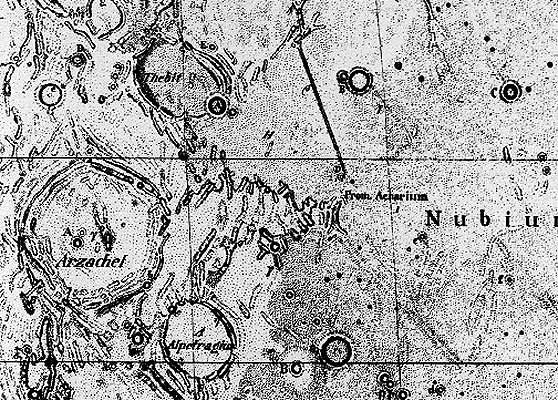Difference between revisions of "June 28, 2014"
| Line 2: | Line 2: | ||
=The End of Lunar Studies= | =The End of Lunar Studies= | ||
| − | + | <!-- ws:start:WikiTextHeadingRule:0:<h1> --> | |
| − | |||
<table class="wiki_table"> | <table class="wiki_table"> | ||
| − | + | <tr> | |
| − | + | <td><!-- ws:start:WikiTextLocalImageRule:14:<img src="/file/view/LPOD-2004-01-16.jpeg/515145764/LPOD-2004-01-16.jpeg" alt="" title="" /> -->[[File:LPOD-2004-01-16.jpeg|LPOD-2004-01-16.jpeg]]<!-- ws:end:WikiTextLocalImageRule:14 --><br /> | |
</td> | </td> | ||
| − | + | <td><em>Scan of small piece of "Mappa Selenographica" by Beer and Mädler </em><br /> | |
<br /> | <br /> | ||
In 1837 a map and book appeared that were so masterful that it was widely assumed that the study of the Moon was then completed. Wilhelm Beer and Johann Heinrich Mädler were the authors, but Beer was the banker who provided the observatory and 3.75" refractor, and Mädler was the observer, artist and scientist who drew the map, <em>Mappa Selenographica</em>, and wrote the classic book, <em>Der Mond</em>. Mädler spent 600 nights observing the Moon. He determined hundreds of crater positions and diameters, measured heights of 800 peaks, and gave more than 100 new names. Strangely, <em>Der Mond</em> was never translated into English, but the principal conclusions have endured: the Moon has no atmosphere, water nor changes. Mädler characterized crater rays and rilles and established a classification of craters. He recognized that lunar craters were unlike any on Earth, and his conclusion still stands: "The Moon is no copy of the Earth"<br /> | In 1837 a map and book appeared that were so masterful that it was widely assumed that the study of the Moon was then completed. Wilhelm Beer and Johann Heinrich Mädler were the authors, but Beer was the banker who provided the observatory and 3.75" refractor, and Mädler was the observer, artist and scientist who drew the map, <em>Mappa Selenographica</em>, and wrote the classic book, <em>Der Mond</em>. Mädler spent 600 nights observing the Moon. He determined hundreds of crater positions and diameters, measured heights of 800 peaks, and gave more than 100 new names. Strangely, <em>Der Mond</em> was never translated into English, but the principal conclusions have endured: the Moon has no atmosphere, water nor changes. Mädler characterized crater rays and rilles and established a classification of craters. He recognized that lunar craters were unlike any on Earth, and his conclusion still stands: "The Moon is no copy of the Earth"<br /> | ||
| Line 21: | Line 20: | ||
<em>Epic Moon</em> by Sheehan and Dobbins, 2001, Willmann-Bell, Inc, Chapter 8.<br /> | <em>Epic Moon</em> by Sheehan and Dobbins, 2001, Willmann-Bell, Inc, Chapter 8.<br /> | ||
</td> | </td> | ||
| − | + | </tr> | |
</table> | </table> | ||
| − | |||
<br /> | <br /> | ||
<hr /> | <hr /> | ||
| − | |||
| − | |||
| − | |||
| − | |||
| − | |||
Revision as of 00:03, 3 January 2015
The End of Lunar Studies
 |
Scan of small piece of "Mappa Selenographica" by Beer and Mädler
|



